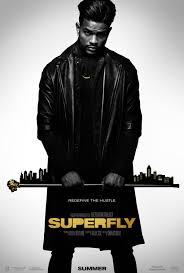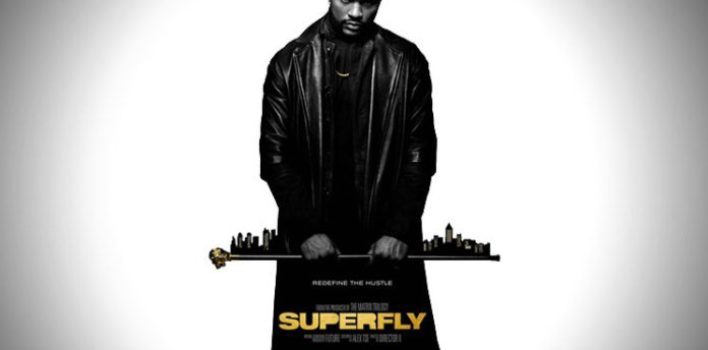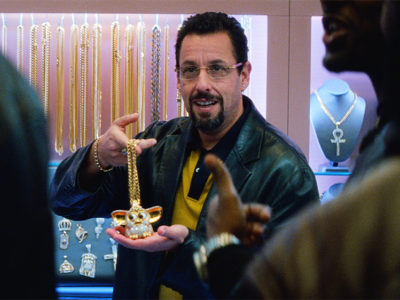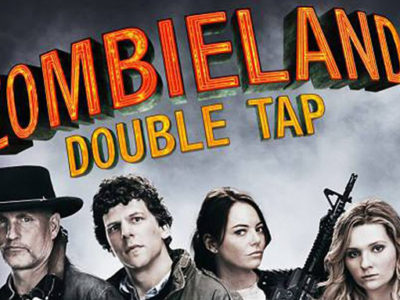Review| Superfly
 The subgenre known as “blaxploitation film”–a term coined by the Los Angeles head of the NAACP, Junius Griffin–rose to prominence in the 1970’s as a direct response to the need for black actors on-screen. Representation mattered in the 1970’s, and blaxploitation films rose to fill the void occupied solely by the stalwart, respectable, and some would say “neutered”, presence of actor Sydney Poitier. Within the blaxploitation genre, actors like Richard Roundtree, Pam Grier, former NFL-star Jim Brown, and Bernie Casey, as well as soundtrack writers Isaac Hayes and Curtis Mayfield, the former winning an Academy Award for the theme to Shaft, made names for themselves and took bold risks. Their stories plumbed the depths of racial inequality, social injustice, black power, and the frustration with the urban ghetto created by the white majority often coined in the films “the man”.
The subgenre known as “blaxploitation film”–a term coined by the Los Angeles head of the NAACP, Junius Griffin–rose to prominence in the 1970’s as a direct response to the need for black actors on-screen. Representation mattered in the 1970’s, and blaxploitation films rose to fill the void occupied solely by the stalwart, respectable, and some would say “neutered”, presence of actor Sydney Poitier. Within the blaxploitation genre, actors like Richard Roundtree, Pam Grier, former NFL-star Jim Brown, and Bernie Casey, as well as soundtrack writers Isaac Hayes and Curtis Mayfield, the former winning an Academy Award for the theme to Shaft, made names for themselves and took bold risks. Their stories plumbed the depths of racial inequality, social injustice, black power, and the frustration with the urban ghetto created by the white majority often coined in the films “the man”.
Widely regarded as being one of the best and most influential of these films, the 1972 Gordon Parks Jr. directed Superfly follows Priest (Ron O’Neal), an under-the-radar drug dealer looking to make one final big score to get out of the game and into a better life. The story follows his travails and machinations to make this final score happen, only to discover leaving the life is not as easy as he may have thought. At times he seems to enjoy the life of a drug-running, power-tripping, coke-snorting hustler, and at other times he promises a better life and way out to his girlfriend Georgia (Sheila Frazier).
The 2018 reimagining of Superfly, directed by renowned Canadian hip-hop music video director, Director X, follows a similar storyline. Youngblood Priest, now played by American Crime and Grown-ish actor Trevor Jackson, narrowly avoids getting shot by Juju, a rival member of the Snow Patrol gang. Like his cinematic predecessor, concocts a way out of “the life” and into a better one, only to run into complications as his associates grasp for more power and rivals pounce on Preist’s sudden uptick in fortunes as the money pours in to finance Priest’s way out.
While the cinematic situations are kept intact in this reimagining, the beats are decidedly different and the end result surprisingly usurps the original and even the opening moments of the movie. The first ten to fifteen minutes of Director X’s Superfly lavishly and strikingly establish Priest’s character and the life he lives, arguably doing this better than the original. However, whereas O’Neal’s Priest’s motives seem to be an inner struggle battling with what he knows and is good at versus what he desires, Jackson’s Priest struggles all remain outwardly focused and quickly undercut any tension or stakes the movie has. The previous incarnation of Priest is menacingly established to be one step ahead of his rivals, but Superfly takes it to Joker in The Dark Knight-level heights of orchestrating everything. The ending plays this out to the nth degree and easily resolves Priest escaping the life, whereas the classic film rather ambiguously establishes Priest’s machinations as helping him escape death, but leaving the viewer unsure if this will secure his freedom or lead him deeper into the drug business.

The most disappointing aspect of Superfly is the missed opportunities to explore the film’s weightier matters. In the movie’s opening scene, Priest is established as a fierce, powerful, and “superfly” drug dealer with a penchant to sanctify himself with deific platitudes, hence the name Priest. It is only when he narrowly avoids a bullet he muses, “all the power in the world can’t stop a bullet.” Yet, instead of exploring this fertile ground of where power corrupts, death is certain, and being involved in criminal activity has consequences, something more subtextual in the 1972 film, Director X seems more concerned with flashy, hip-hop aesthetics like scantily clad women, making it rain, nice cars, and private planes. Even when the movie includes socially relevant content like a police officer shooting an unarmed black man, it seems less like an inhabiting the cultural and racial realities of its time period, something the original Superfly does expertly, and more like a short visitation before returning to more boilerplate story beats and generic action.
Superfly had the opportunity to take up the mantle of its blaxploitation predecessor and tackle issues related to the injustice of institutional racism and escaping the cultural ghetto still remains difficult forty-plus years later. However, in 2018, a movie like this exists in the shadow of the success of Ryan Coogler’s Black Panther. A hallmark of representation for black Americans, it sets a new standard of a more hopeful, powerful image for black actors, as well as everyday individuals. Superfly does features cast almost devoid of white actors but fails to capitalize on its representation or step outside of Black Panther’s shadow. An opportunity to be a worthy successor of its source material namesake and a possible darker counterpoint on the current social, economic, and cultural situation of black Americans is lost in flashy rap video set pieces and a confusing commitment to Priest’s demi-god-like machinations and lavish “American Dream” lifestyle.







